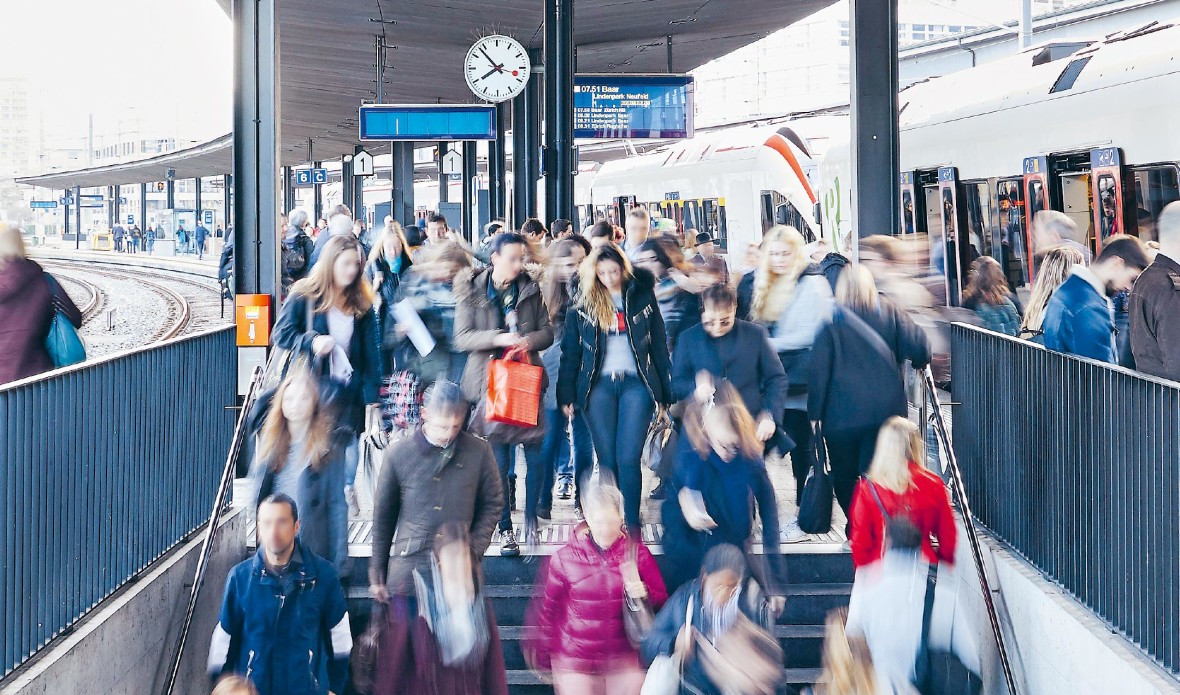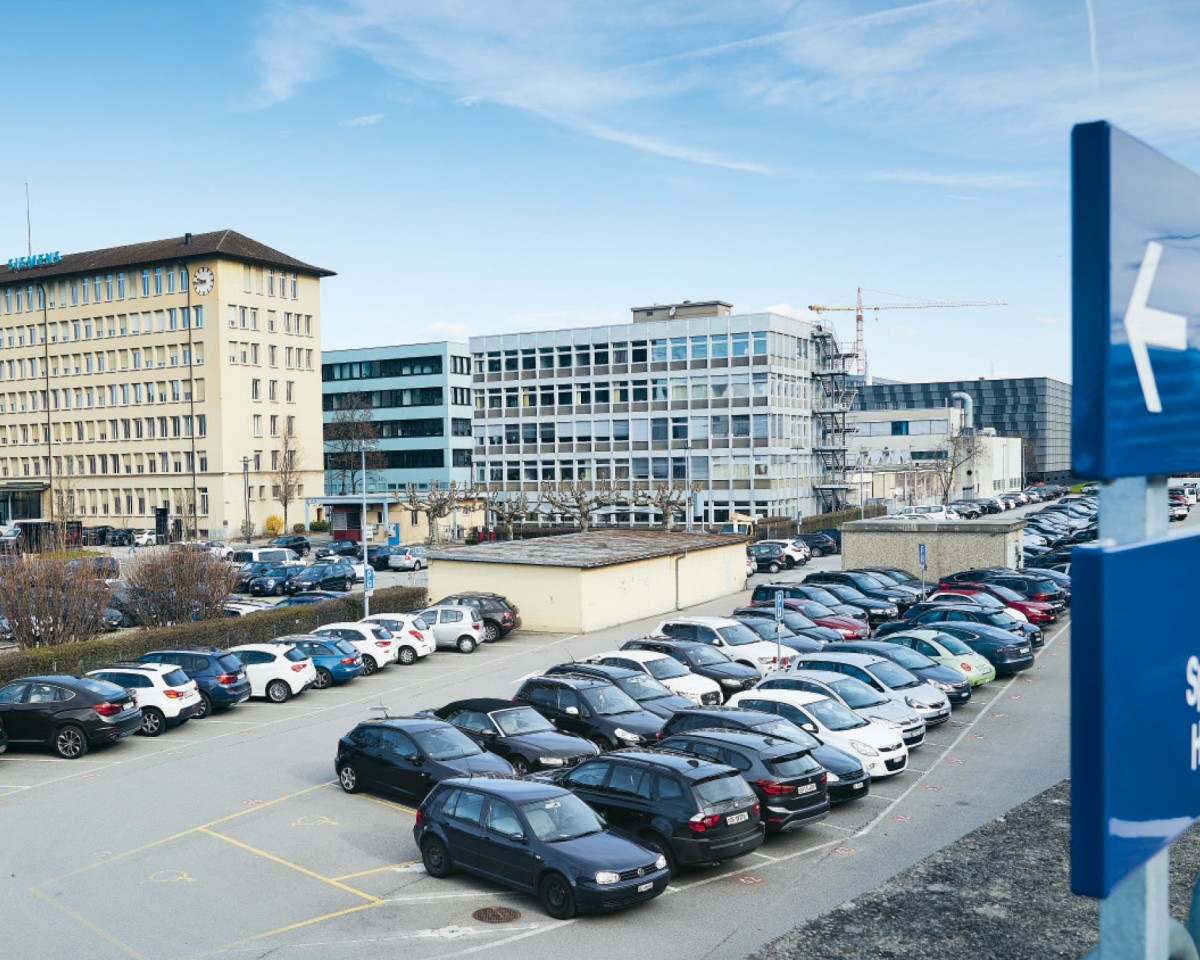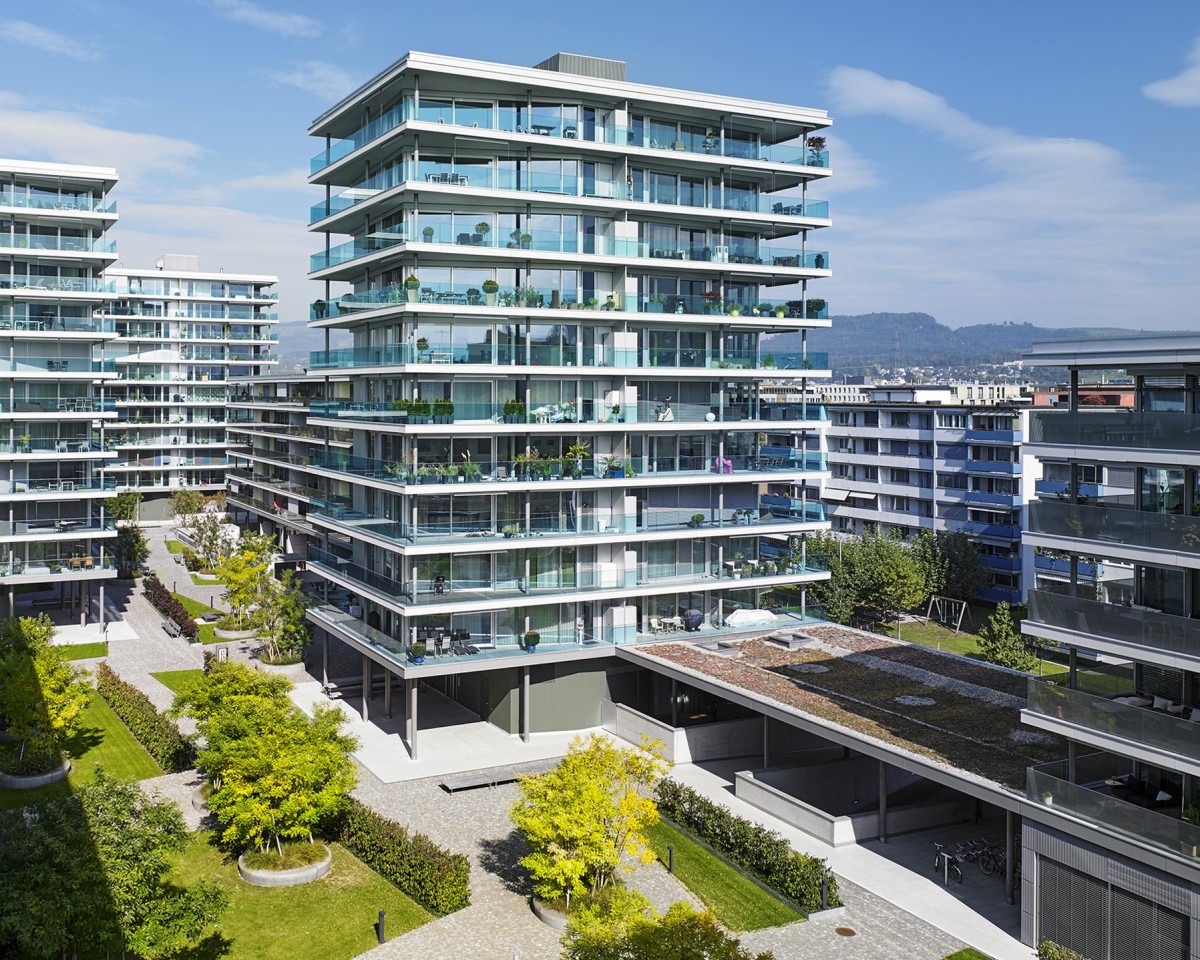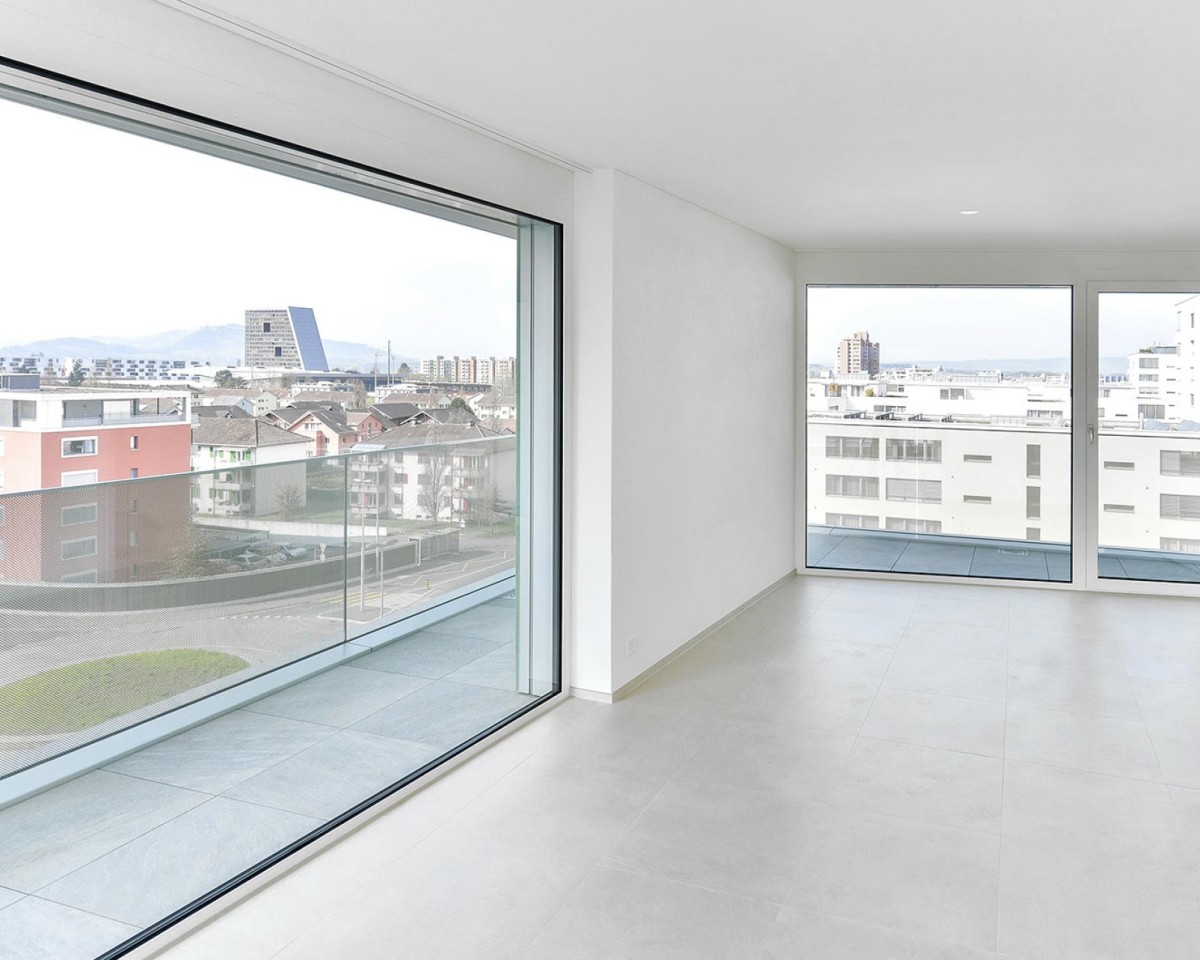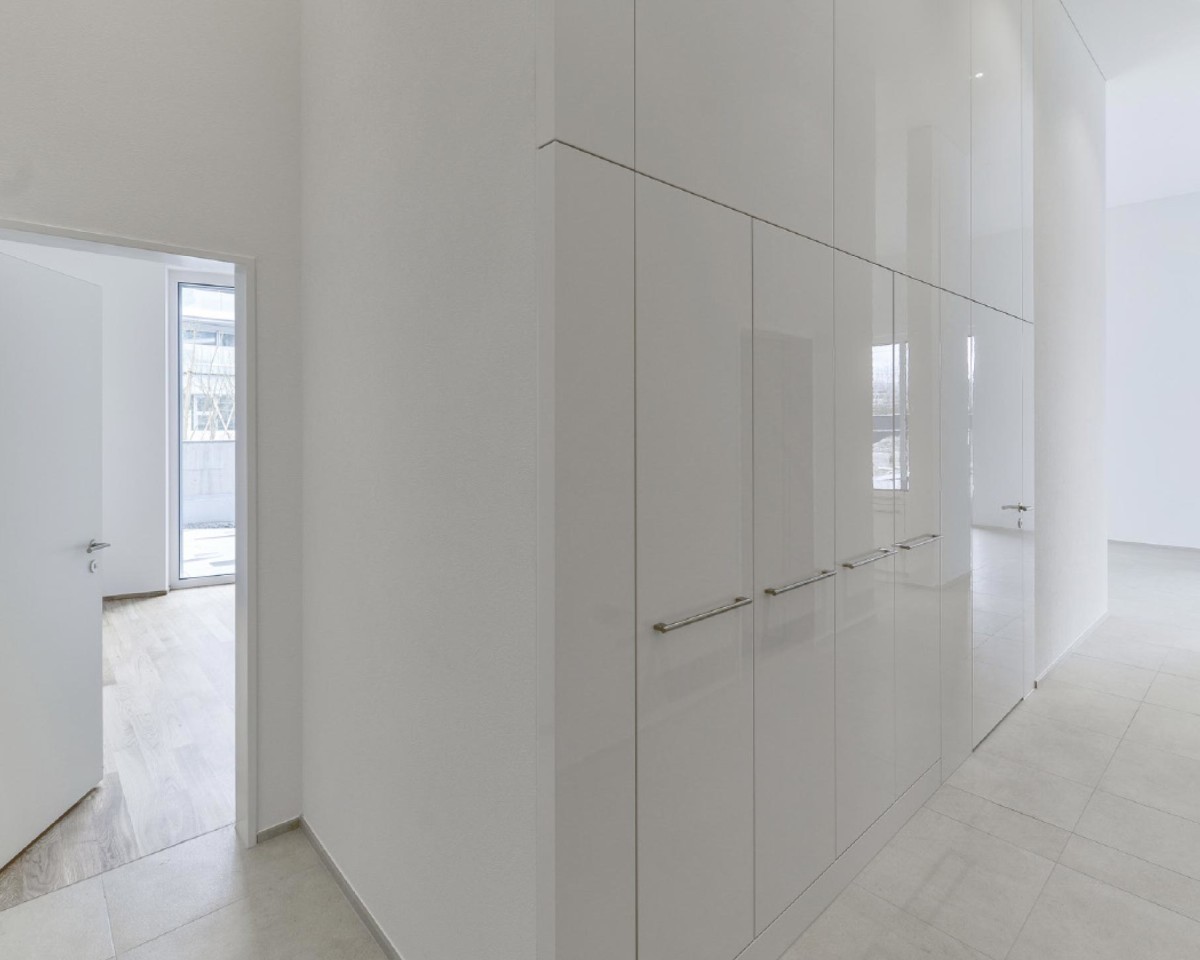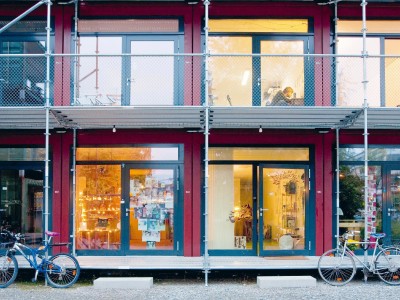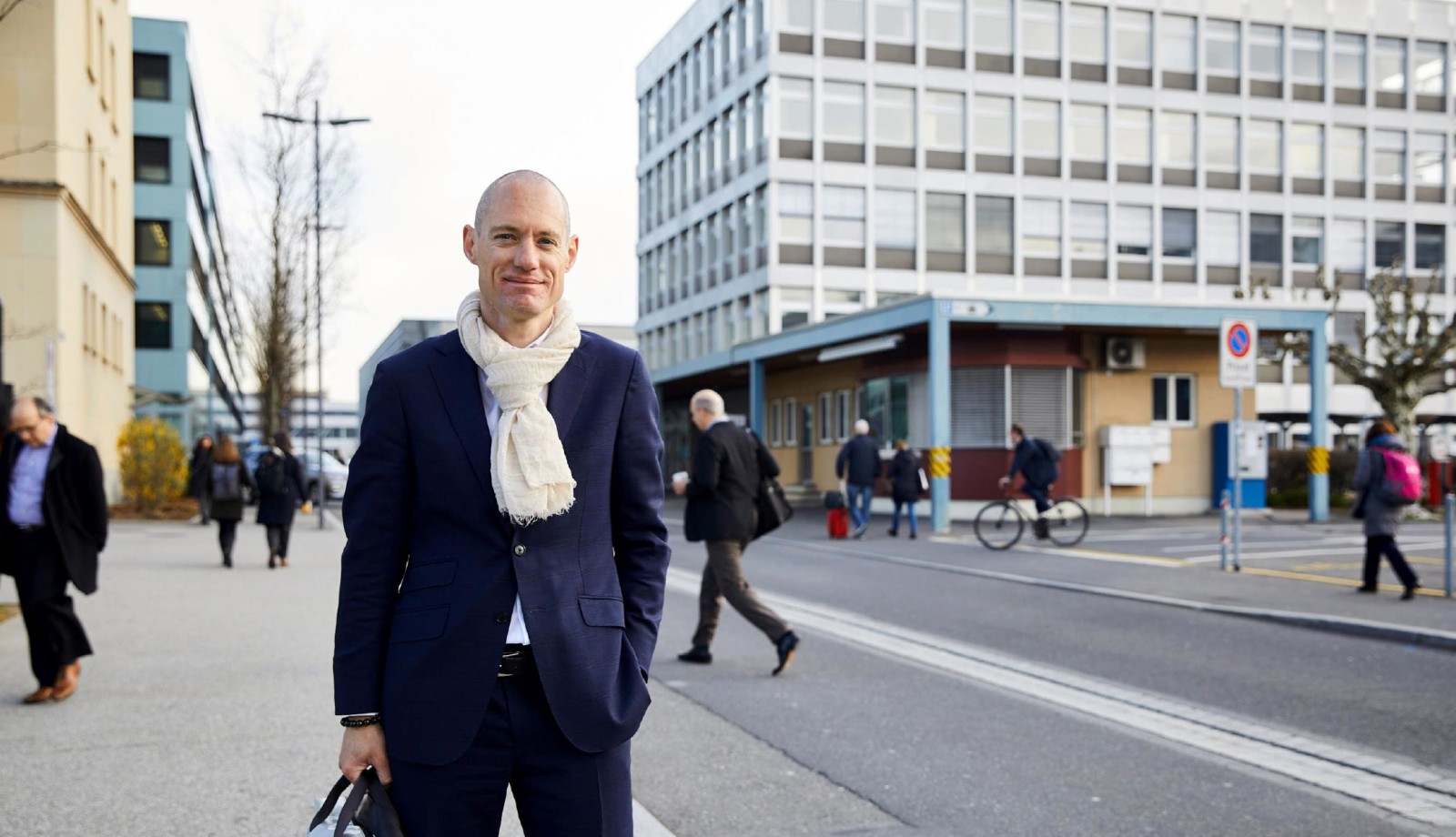
IQ beats m²
Demographic, social and economic trends influence space requirements and how space is utilised. Yet there are limits to settlement areas and construction zones. The question of where and how new living space is to be created in the future therefore calls for new approaches, far-sighted planning and intelligent solutions.
Simply the term “space” invites philosophising: we say “bedroom” yet talk of storage “space”. We associate sleeping “space” with alpine huts or barracks. So does “space” somehow have less value than a “room”? Architects have a clear answer to this: they feel commitment to spatial thinking and their primary aim is to create, structure and design spaces – resulting in the number and dimensions of the rooms.
Area – a finite commodity
Subtleties of language are not so important to the average house or apartment dwellers, whose major choice criteria are the number of rooms and the area expressed in square metres.
Unfortunately, the area of land is not only a scarce commodity but also a finite one. Switzerland’s 41,285 square kilometres are a fixed total. As mountains, lakes, forestry and agricultural zones account for about 70 per cent of the country’s territory, the area suitable for settlement is limited to about 30 per cent of that amount. Most of it lies in the Swiss Mittelland between the Jura and the Alps. According to the Federal Statistical Office, 7.5 per cent of Switzerland’s total area was actually populated in 2009. In 1985, that figure still stood at 6.0 per cent.
It is precisely because the land area cannot be increased that it must be managed shrewdly. Federal, cantonal and municipal authorities ensure this shrewd use of land, as well as demarcation between construction zones and non-built-up areas. They coordinate activities in this area and implement a settlement policy geared to the country’s planned development. The Federal Act on Spatial Planning (Raumplanungsgesetz, RPG) requires this, and has the backing of the Swiss population: the act’s first revision (RPG I) was voted in with a 62.9 per cent majority in a referendum held on 3 March 2013.
Changes to construction zones
The Swiss landlords association (HEV) summarises the most important changes in RPG I as follows: The size of construction zones is set to cover needs for the next 15 years and no more. Municipalities with construction zones that are too large must reduce their size. Cantons must levy a value-added tax of at least 20 per cent on land newly allocated to the construction zone. One use for the tax revenue thus raised is compensation for landholders whose plots are zoned out.
Implementation of RPG I rests on outline plans that the cantons are required to draw up and submit for federal approval. As at the end of March 2018, outline plans had been approved for 11 cantons including Aargau, Bern, Lucerne and Zurich. The canton of Zug expects a federally approved outline plan to be in place by the end of 2018.
The total area of construction zones in Switzerland has not grown significantly in recent years.
Stagnating total area of construction zones
Contrary to popular belief, the total area of construction zones in Switzerland has not grown significantly in recent years. The increase from 228,619 hectares to 232,038 hectares between 2012 and 2017 amounts to 1.5 per cent, according to the 2017 Swiss construction zone statistics published by the Federal Office for Spatial Development (ARE). The areas allocated to the top five uses (residential zones, work zones, mixed zones, central zones and zones for public use) actually remained constant during that period – and this despite the number of inhabitants in the construction zones having increased by 7.9 per cent to 8 million. The average construction zone area per inhabitant has thus fallen from 309 to 291 square metres.
Depending on the calculation basis, between 11 per cent and 17 per cent of the construction zones in Switzerland are yet to be developed. Assuming that these construction zones will be developed with the same density as hitherto, there is still room for 1.0 to 1.7 million additional inhabitants.
In terms of statistical averages, supply of living space for the Swiss population is therefore not a problem. In practice, however, there exists a considerable gap between supply and demand in certain regions. This is the biggest challenge facing the public purse and players in the construction and real estate industry.
Drivers of demand
The most important factor is population growth, which has been significantly influenced by immigration in recent years. Although annual net immigration has been declining since 2013, statistics from the State Secretariat for Migration (SEM) indicate that, on balance, migration among the permanent foreign resident population nonetheless reached over 51,400 people in 2017.
Differentiation of construction zones by their respective uses was introduced around a century ago, which has proved to be space-consuming and distorting. Industrial and commercial zones were strictly segregated from residential zones. A geographical gap therefore arose between working and living, which was bridged by marked expansion of the transport infrastructure. New suburban railway and motorway links reduced travel times and boosted the attractiveness of residential areas further afield from the workplace. Relatively low land prices on the fringes of the conurbations made free-standing and terraced houses affordable to a wider circle of people in work. A home of one’s own “out in the country” became the affordable alternative to renting a city apartment.
Parallel to growing demand for owner-occupied residential property, the blossoming of real estate as an asset class contributed to the rising demand for land. Due to a lack of investment alternatives offering good returns and attracted by low interest rates, more and more investors pushed into the housing market – “come hell or high water”, as the “Neue Zürcher Zeitung” wrote on 20 July 2017. Many of these apartments were built where land was available, not where demand existed. The figures confirm this. Given an average household of 2 to 2.5 people, the 51,400 net immigration (2017) mentioned previously would generate a need for approximately 23,000 apartments. But more than twice as many apartments were actually completed in 2017. Nevertheless, the Federal Office of Housing (BWO) has issued a quiet all-clear: “There has been a recent downward trend in construction permits, indicative of investor reaction to rising vacancy rates,” reads “Der Wohnungsmarkt auf einen Blick” (The housing market at a glance) published in February 2018.
Misallocation of space
Societal developments also affect demand for space. A growing segment of the population lives alone. Even though singles mostly occupy smaller apartments, as the sole users of a 1-or 2-room apartment, they are likely to occupy more living space on average than a member of a 3- or 4-person household that occupies a larger apartment. Then there is the indirect influence of the growing divergence between rents for existing tenancies and the rents being asked for new leases. Given the comparatively reasonable rents paid by established tenants, singles and couples have no financial incentive to give up an apartment that might actually be too large for them. With considerably higher rents being asked of new tenants, a change of residence would be a bad deal. There is undoubtedly an allocation problem here.
Densification is the order of the day
The trend towards densification shows that expansion of living space need not automatically lead to yet more urban sprawl. “New spaces can also emerge from existing ones,” points out François Bernath, namely in older properties conceived for a specific purpose that is no longer relevant, properties with a high utilisation reserve or with room layouts that no longer fit the times. “It becomes particularly interesting when that involves modifying existing structures and developing solutions for the future.”
The legislature and public authorities should encourage or at least ease developments like these. In François Bernath’s experience, better utilisation of space is possible when multiple uses are permitted. For example, zoning plans should allow for people to live and work side by side. “Thanks to growing digitalisation, work will continue to shift to living space. Conversely, office spaces will become increasingly liveable. This is the situation to keep in mind as we develop architectural solutions for the future; rigid segregation of working and living spaces is no longer in line with the times.” The same also applies to delineating specific zones for hotel buildings and residential buildings, which no longer makes sense in an age of new business models such as Airbnb and WeLive.
“A site with good public transportation links is of central importance to Alfred Müller AG as a developer and provider of residential and commercial real estate.”
Add-ons to existing properties offer huge potential for densification. A 2012 study by the Swiss Real Estate Institute showed that, in Zurich alone, add-ons to existing buildings in the vicinity of large suburban railway stations could create living space for 36,000 people. But then, ideological priorities would also need setting differently. “In urban transformations today, it is remarkable how we always talk only about architectural quality and never about the demographically significant criterion of quantity,” pointed out Thomas Held, former head of Avenir Suisse, in an interview with “Neue Zürcher Zeitung” on 29 November 2014.
François Bernath, too, speaks plainly: “In the Federal Act on Spatial Planning, the legislature has created an instrument designed to slow down further urban sprawl and facilitate inward-directed densification. It is now incumbent on cities in particular to adapt and align their planning tools in ways that will make densification possible.”
“Rigid segregation of working and living spaces is no longer in line with the times.”
Mr Bernath, Alfred Müller AG is committed to developing spaces, renewing spaces and creating spaces. But where can these spaces be found in Switzerland to begin with?
There are not that many greenfield sites left to build on, but new space may be created out of pre-existing space. For example, older properties conceived for a specific purpose that is no longer relevant, properties with a high utilisation reserve or with room layouts that no longer fit the times.
New spaces can still be created in many localities in Switzerland, but it becomes particularly interesting when that involves modifying existing structures and developing solutions for the future.
How do you define the right location for new residential buildings? What criteria does Alfred Müller AG apply to the acquisition of building land?
We are interested in locations that have not seen excessive price leaps in recent years, where vacancy rates are generally low, and where there is potential for additional living space.
Land or existing property that we acquire for redevelopment or repositioning should, if possible, be well accessible and near to key infrastructure such as shopping and schools.
Investors and construction companies are criticised as significant contributors to urban sprawl. How do you respond to such accusations?
The blanketing of land by settlements has spread considerably in recent decades. A lot of building work has been in response to strong growth in demand for living space and a generally rising population. And yes, it has to be said that some of this growth was uncoordinated.
But with the revised Federal Act on Spatial Planning, the legislature has created an instrument designed to slow down further urban sprawl and facilitate inward-directed densification. It is now incumbent on towns and cities in particular to adapt and align their planning tools in ways that will facilitate densification.
How could the legislature and the public purse contribute to better use of space?
Better utilisation of space is possible when multiple uses are permitted. For example, zoning plans should allow for people to live and work side by side in order to allow a greater mix of uses.
Thanks to growing digitalisation, work will continue to shift to living space. Conversely, office spaces will become increasingly liveable. This is the situation to keep in mind as we develop architectural solutions for the future. Rigid segregation of working and living spaces is no longer in line with the times.
What are the criteria for determining the areas, the number of rooms and the floorplans of apartments in a new residential development? How have these changed in recent years?
We set the number of rooms based on demand. Their areas will be more or less expansive depending on people's willingness to pay for a place at a given development site.
We have noticed a decline in demand for large apartments in recent years. People more often live alone, as childless couples, or as single parents.
Tenants today expect even a rather small apartment to feel spacious. How can this be achieved?
Our apartment designs are open and transparent. In addition, we provide storage rooms and fitted cabinets, as well as intelligent kitchen and bathroom furnishings. Occupants can thus dispense with larger items of storage furniture and so gain space.
High quality of materials is also important to us. Our clientèle appreciate that we create spaces in which they feel comfortable from day one.
What experience does Alfred Müller AG have with densification projects? What does an intelligent solution look like?
The Feldhof and Feldpark developments that Alfred Müller built here in Zug use structures with varying heights to produce a good urban density. In the Suttergut development in Burgdorf, we have constructed a residential building with very attractive living spaces thanks to apartments that are compactly designed and intelligently configured. These two examples were both created on former industrial sites.
A good urban planning arrangement and carefully considered integration with existing infrastructures matter particularly in site development. Creative approaches free from high regulatory hurdles are needed for repositioning or repurposing existing buildings to ensure their continued economic raison d'être.
Is there an upcoming densification project that you are particularly excited about?
The former headquarters site of Landis+Gyr near Zug railway station. We will be redeveloping a portion of this site in collaboration with the city of Zug and four other landholders. As part of an overall urban development concept, we plan to build apartments as well as office and service space in a few years’ time. This is how Alfred Müller AG can contribute to the creation of an attractive residential, working and living district – a new magnet for the population of Zug.
Mr Bernath, where do you live yourself?
In a small city apartment.

